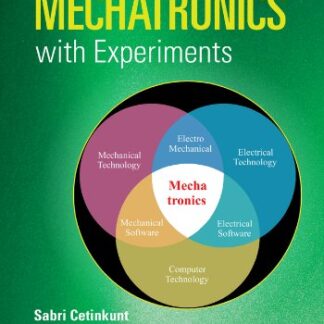Description
Fundamentals of Atmospheric Modeling 2nd Edition by Mark Z. Jacobson, ISBN-13: 978-0521548656
[PDF eBook eTextbook]
- Publisher: Cambridge University Press; 2nd edition (June 13, 2005)
- Language: English
- 828 pages
- ISBN-10: 0521548659
- ISBN-13: 978-0521548656
Modern atmospheric science is a field that combines meteorology, physics, mathematics, chemistry, computer sciences, and to a lesser extent geology, biology, microbiology, and oceanographic sciences. Until the late 1940s scientific studies of the atmosphere were limited primarily to studies of the weather. At that time, heightened concern about air pollution caused an increase in studies of atmospheric chemistry. With the invention of the computer, modeling of weather and air pollution commenced. Since the late 1940s, the number of meteorological and air-pollution studies has increased rapidly, and many meteorological and air-pollution models have merged.
The purposes of this book are to provide (1) a physical understanding of dynamical meteorology, land- and water-surface processes, radiation, gas chemistry, aerosol microphysics and chemistry, and cloud processes, (2) a description of numerical methods and computational techniques used to simulate these processes, and (3) a catalog of steps required to construct, apply, and test a numerical model.
The first chapter of this book gives an overview of model processes and time scales. Chapter 2 describes atmospheric structure, composition, and thermodynamics. In Chapters 3–5, basic equations describing dynamical meteorology are derived. In Chapter 6, numerical methods of solving partial differential equations are discussed. A technique of solving dynamical meteorological equations is provided in Chapter 7. InChapter 8, boundary-layer and ground processes are described. Chapter 9 introduces radiation. Chapters 10–12 focus on photochemistry and numerical methods of solving chemical equations. Chapters 13–17 describe aerosol physical and chemical processes. Chapter 18 discusses cloud thermodynamics and microphysics. Chapter 19 discusses aqueous chemistry in aerosol particles and clouds. Chapter 20 describes sedimentation and dry deposition. Chapter 21 outlines computer model development, application, and testing.
The book is designed as an upper-level undergraduate, graduate, and research text. The text assumes students have a basic physical science, mathematical, and computational background. Both Syst`eme Internationale (SI) and centimeter-gramsecond (CGS) units are used. Dynamical meteorologists often use SI units, and atmospheric chemists often use CGS units. Thus, both unit systems are retained. Unit and variable conversions are given in Appendix A.
What makes us different?
• Instant Download
• Always Competitive Pricing
• 100% Privacy
• FREE Sample Available
• 24-7 LIVE Customer Support




